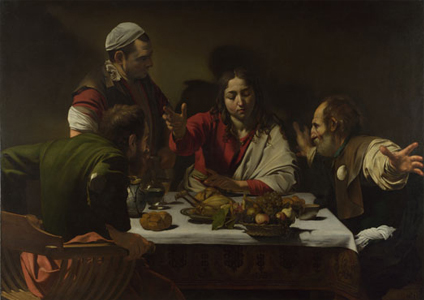Andrew Graham-Dixon feels left in the dark by Sir Ernst Gombrich's reflections on the history of the shadow in paintung
The pale, plump, youthful face of the risen Christ in Caravaggio's The Supper at Emmaus is lit by a source outside the painting and, by implication, outside this world. We see him in an obscure simple inn, the Redeemer quietly making his presence known at a table spread with a plain white cloth, in a dark room, over a meal of boiled fowl, loaves of bread and fresh fruit. He reaches out to bless and break the bread and, doing so, he blesses all with potential salvation. His companions, who have only now, at this precise instant, discovered his identity, are dumbstruck by the revelation. One, his back to us, prepares to rise from the table, hands on the arms of his chair, paralysed for ever by awe. The other spreads his arms as wide as he can, trying to measure astonishment like a fisherman demonstrating the size of a fish that got away - and miming, with unconscious poignancy, the ordeal of crucifixion.
Caravaggio's subject is the terror and wonder of God made flesh; the miracle of the impalpable and unknowable making itself palpable and known and here in the room. The picture is its own miracle, a work of art with seemingly occult powers of persuasion. The outspread hands of Saviour and disciple reach out of another world and into this one, as if fingers might touch across the membrane separating illusion and reality. The compelling believability of these painted arms is worked, by Caravaggio, through cunning foreshortening. From the tip of Christ's thumb, back along the dappled sleeve of his red shirt to his shoulder, his arm is a piece of art that measures distance, in graded...


